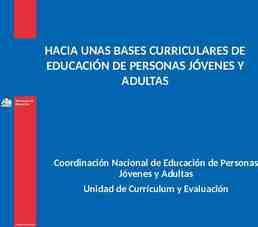Incorporating Verbal Behavior Instruction into Everyday Activities
20 Slides3.95 MB
Incorporating Verbal Behavior Instruction into Everyday Activities for Children with Autism Mark L. Sundberg, Ph.D., BCBA-D (www.marksundberg.com)
Many Variations of a “Behavioral” Intervention for Children with Autism More than 20 different “approaches” and “therapies” listed on the Autism Speaks’ website National Standards Project’s “11 Established Treatments” All these different approaches show a wide range of adherence to the basic principles of behavior What constitutes a behavioral approach to autism treatment? BACB “Guidelines” for Health Care Coverage document (2012) (www.bacb.com/Downloadfiles/ABA Guidelines for ASD.pdf) Baer, Wolf, & Risley (1968), “Some current dimensions of applied behavior analysis”
National Standards Project: Established Treatments Antecedent Package Behavioral Package Comprehensive Behavioral Treatment for Young Children Joint Attention Intervention Modeling Naturalistic Teaching Strategies Peer Training Package Pivotal Response Treatment Schedules Self-management Story-based Intervention Package
Approaches to Intervention from Autism Speaks’ Website: “Structured Teaching” DTT ABA EIBI ABA/Verbal Behavior (the “verbal behavior approach”) TEACCH All share common features, for example systematic use of basic behavioral procedures (less so with TEACCH) instructor led instruction table-top setting a progressive curriculum with specific targets data collection There are differences between these approaches as well
Approaches to Intervention from Autism Speaks’ Website: “Naturalistic Teaching” Incidental teaching Milieu training (Mand-model) Pivotal Response Training (Natural Language Paradigm) Natural Environment Training (ABA/VB) All share common features, for example systematic use of basic behavioral procedures teaching occurs away from a specific work station focus on a child’s on-going MOs, and child initiated behaviors focus on social interactions use of various expansion techniques data collection There are differences between these approaches as well
Approaches to Intervention from Autism Speaks’ Website: Other Approaches Use behavioral procedures, but often negative re: “behavior analysis” The Denver Model RDI Floortime (DIR) SCERTS All share common features, for example general dissatisfaction with rigid structured teaching and “ABA” strong focus on a child’s preference, initiations, and activities social interaction developmental framework getting into the “child’s world” There are differences between these approaches as well
Choosing Among Approaches Old versions of ABA are presented and critiqued as current practices ://www.youtube.com/watch?v fy6T7FXmnJI
Looking for Common Ground: General Issues Focus on language and social behavior Intensive intervention program Parents need to be involved Teachers and parents need training and supervision Evidenced-based, data collection, measurable gains (but major variation among approaches) Many of the various approaches have gone through changes over the years (e.g., Hart & Risley, Lovaas, Rogers, Sundberg), many are getting closer to each other Hineline (2012)
Looking for Common Ground: Technical Elements Skills acquired need to be: Functional Generalized Spontaneous Generative Social interaction is a major component of any program Reduction of behavior problems and barriers to learning Teaching procedures are based on standard ABA methodology (e.g., systematic use of reinforcement, prompting, fading, shaping, extinction, generalization, chaining, data collection, etc.) Although there is variation among approaches as to adherence to behavioral procedures
Suggested Blending of Various “Uncommon” Elements of the Approaches Typically human development should serve as a guiding framework for the program (the developmental models, Bijou & Baer, 1965) “The need for both structured and natural environment teaching for children with autism” (Sundberg & Partington, 1999) A focus on a child’s immediate interests (MOs) and initiation (mands) But also a focus on establishing nonverbal (tact) and verbal (intraverbal) stimulus control Focus on establishing adult instructional control The language assessment and intervention program based on Skinner’s (1957) analysis of verbal behavior, rather than the commonly used expressive-receptive framework Use Skinner’s analysis of verbal behavior to analyze potential barriers that might impede language and social development
A Suggested Framework for Teaching Language in a Child’s Natural Environment Language and social skills can be established, practiced, and refined in the context of a child’s day-to-day activities The MOs and SDs in the NET are often different from those in DTT The consequences are often different, some involve automatic Sr/Sp Live actions, properties, special relations, degree of movement, etc. Direct physical contact with stimuli Natural variation of stimuli and motivation Verbal and nonverbal skills brought together in a functional context Social elements more readily available Disruptions and changes occur naturally and present opportunities to teach a variety of skills (e.g., adaptability to change, problem solving)
Examples of Daily Activities Conducive to Natural Environment Training Play activities (e.g., play structure, sandbox, water play) Self-care routines (e.g., dressing, bathing, combing hair) Life skills (shopping, cleaning, money management) Eating activities (e.g., snacks, dinner table, cooking) Social play and interactions (e.g., chasing games, pretend play) Arts and crafts (e.g., coloring, cutting, pasting) Outside activities (e.g., walks through the woods, planting a garden) Travel activities (e.g., riding in a bus, boat, or car) Specific toys (e.g., Lego blocks, train set, cars) Physical activities (e.g., bike riding, climbing, running) Sports (e.g., playing miniature golf, swimming, hitting a ball) Video entertainment (e.g., watching TV, iPads, video games)
Activity Echoic Imitation Listener Mand Matching Tact LRFFC Intraverbal Nature Hunt Repeat the words of others (e.g., “I see it!”) Imitate others looking for things (e.g., picking up rocks) Finding specific items in nature when asked Putting things together that are the same Finding general items in nature when asked Talking about the nature hunt when back in the classroom Shopping Laundry Sandbox Arts and Crafts Train set Volcanoes Asking for the location of things (e.g., sticks) Naming things in nature (e.g., rocks)
Some Guidelines for NET
Some Guidelines for NET
Some Guidelines for NET Relevant to the child’s daily life (e.g., eating, playing, activities of daily living, life skills, travel, entertainment, physical activity) Make it fun Use natural voice, tone, affect, etc. Make use of the child’s current MOs Use ABA procedures (e.g., pairing, prompting, delay, reinforcement) Encourage initiation (not all adult presented SDs) Include peers if possible (group NET) Use turn taking Include activities to promote generalization
Some Guidelines for NET Read the child to pace trials (e.g., laughter, smiles, eye contact, facial expressions, long latencies, negative behavior, non responding) Content developmentally appropriate Content at the child’s VB-MAPP level and current IEP goals Mix trials (interspersal) on all the relevant VB-MAPP domains (e.g., mand, tact, imitation) Stay on the same contextual topic (unless child moves to a new topic, boredom sets in, etc.) “Drill-scrimmage-game” framework can be used (Carl Sundberg, BACA)
Some Guidelines for NET
Conclusions Behavior analysis has much to offer autism treatment Common to misunderstand and misrepresent behavior analysis It is essential to provide language and social skills training in the child’s natural environment, as well as in structured teaching Typical human development provides a guide for curriculum design Skinner’s analysis of verbal behavior provides a framework for language and social skills assessment and intervention Basic behavioral procedures provide a teaching methodology Bringing together the various approaches can help to clarify what constitutes “a behavioral approach to autism treatment”

























